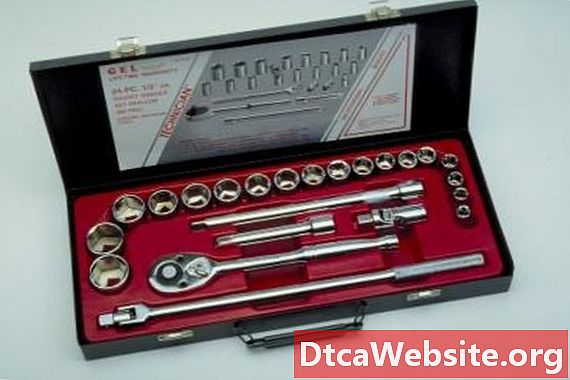
Contenu
- Power Steering Fluid Reservoir
- Power Steering Hoses
- Power Steering Pump
- Rack or Steering Gear Housing
- Hydro Boost Brakes

Proper operation of the power steering system is critical to automotive safety. Any sign of fluid leakage should be taken seriously and addressed as quickly as possible because a low fluid level will make steering difficult and could result in damage to other system components. The first step in solving this problem is to locate the leak; this can be done much faster if you know what can cause the leak and where to look for it.
Power Steering Fluid Reservoir
The power steering fluid reservoir is typically located on the drivers side of the engine compartment towards the front. It is usually a semi-clear plastic container with "max" and "Min" marks on the side. The fluid level should be between these marks. Sometimes during servicing, the reservoir is accidentally overfilled, which may look like a leak. On some vehicles, especially older models, the reservoir may be part of the power steering pump assembly. In this case, the reservoir top must be removed to check the fluid level.
Power Steering Hoses
The power steering system usually has two or three hoses, depending on its configuration. There is a pressure hose from the power steering pump to the steering box, a return hose from the steering gear box to the reservoir and in the case where the reservoir is separate from the power steering pump, and a supply hose from the reservoir to the power steering pump. Any of the hoses can form a leak. Vibration from normal operation of the vehicle can cause hoses to rub against other engine parts, resulting in a leak. The connections between the hoses and the other steering system components can leak if the connection is not tight or if a seal is defective. Leaks are most common in the pressure hose due to the high operating pressure of the system.
Power Steering Pump
The power steering pump can also be a source of leaks. Sometimes the pressure created by the pump will cause a crack in the pump casing, or the seal around the pump shaft may be worn. Most pump casings consist of two halves bolted together, and the gasket at the joint can leak if the bolts are loose or the gasket is old.
Rack or Steering Gear Housing
Depending on the type of power steering system, the power assist mechanism is housed within the rack housing (for rack and pinion systems) or in the steering gear housing. In either system, the seals for the pressurized power assist piston can leak if they are old or worn.
Hydro Boost Brakes
On some cars the power unit for steering and brake systems is combined. In this case, there are several hoses and other components that divide the power between the two systems. Each hose or component can develop leaks, especially at gaskets, seals and connection points.


